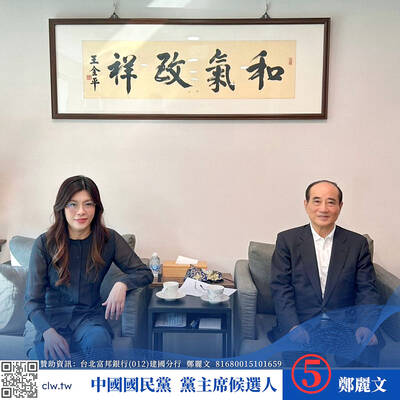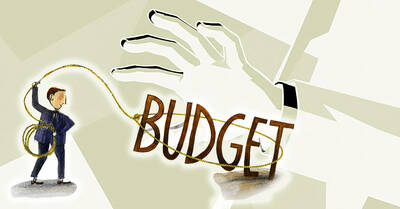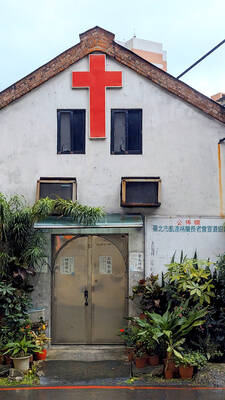VIEW THIS PAGE It’s noon in Taipei, 5am in Paris and midnight in New York as I take my seat in economy class. The seatbelt and no smoking lights have been switched on and the monitor on the wall shows a plane taking off. A “stewardess” comes over to take my order.
Taipei has seen its fair share of theme restaurants over the years. The Jail (惡魔島) shackled diners with handcuffs and crossed the limits of cultural sensitivity by hanging photos of Nazi concentration camps on its prison-like walls. DS Music Restaurant played on a hospital theme, complete with IV drips for drinks, wait staff dressed as nurses and hospital beds for tables.
A380 In-Flight Kitchen is named after the largest passenger airliner in the world. The restaurant looks and functions much like the Airbus it’s named after — though it only has one floor. “Passengers” sit in “first class,” “business class,” or, like this flyer, “economy class.” I was assigned seat 10A. Large comfortable blue chairs with headrests covered with white headrest covers emblazoned with the “airline’s” logo ensure optimum comfort for those long-haul meals. Stewardesses are dressed neatly in uniforms and dash back and forth with trays of “airplane food” or beverages on metal trolleys. A line of oval-shaped windows run along one side and look out onto a white “sky.”
The a la carte and set menus include foie gras filet mignon, vanilla lamb, dory and German pig knuckle (NT$480 for the set menu, NT$420 for a la carte), as well as chicken and pasta. There is also chicken spaghetti (NT$220) and stewed beef in red wine (NT$220) — both set meals and served in the same plastic trays found on airplanes. I went with the grilled US steak set menu (NT$480 set menu, NT$420 a la carte).
The iceberg lettuce salad came with some withered sprouts, chunks of moistureless cucumbers and an out-of-place wedge of sliced boiled ham. The miso dressing didn’t do much to enliven this salad, half of which I left in the bowl. The corn chowder soup wasn’t much of an improvement. It was tasteless and seemed to have come from a packet.
The steak was adequate and came with a dollop of mashed potatoes, a few green beans and baby corn. Cooked to my specifications — medium rare — it was served with a gravy-like sauce, the only purpose of which, aside from complementing the mashed potatoes, was to hide the generous marbling (dare I say gristle) of the beef. Dessert — coffee and sponge cake — was as memorable as the appetizer.
Although the decor is creative and the service prompt, the food will certainly not make me a “frequent flyer” in this mid-range family restaurant.VIEW THIS PAGE

Following the rollercoaster ride of 2025, next year is already shaping up to be dramatic. The ongoing constitutional crises and the nine-in-one local elections are already dominating the landscape. The constitutional crises are the ones to lose sleep over. Though much business is still being conducted, crucial items such as next year’s budget, civil servant pensions and the proposed eight-year NT$1.25 trillion (approx US$40 billion) special defense budget are still being contested. There are, however, two glimmers of hope. One is that the legally contested move by five of the eight grand justices on the Constitutional Court’s ad hoc move

Stepping off the busy through-road at Yongan Market Station, lights flashing, horns honking, I turn down a small side street and into the warm embrace of my favorite hole-in-the-wall gem, the Hoi An Banh Mi shop (越南會安麵包), red flags and yellow lanterns waving outside. “Little sister, we were wondering where you’ve been, we haven’t seen you in ages!” the owners call out with a smile. It’s been seven days. The restaurant is run by Huang Jin-chuan (黃錦泉), who is married to a local, and her little sister Eva, who helps out on weekends, having also moved to New Taipei

The Directorate-General of Budget, Accounting and Statistics (DGBAS) told legislators last week that because the Chinese Nationalist Party (KMT) and Taiwan People’s Party (TPP) are continuing to block next year’s budget from passing, the nation could lose 1.5 percent of its GDP growth next year. According to the DGBAS report, officials presented to the legislature, the 2026 budget proposal includes NT$299.2 billion in funding for new projects and funding increases for various government functions. This funding only becomes available when the legislature approves it. The DGBAS estimates that every NT$10 billion in government money not spent shaves 0.05 percent off

Dec. 29 to Jan. 4 Like the Taoist Baode Temple (保德宮) featured in last week’s column, there’s little at first glance to suggest that Taipei’s Independence Presbyterian Church in Xinbeitou (自立長老會新北投教會) has Indigenous roots. One hint is a small sign on the facade reading “Ketagalan Presbyterian Mission Association” — Ketagalan being an collective term for the Pingpu (plains Indigenous) groups who once inhabited much of northern Taiwan. Inside, a display on the back wall introduces the congregation’s founder Pan Shui-tu (潘水土), a member of the Pingpu settlement of Kipatauw, and provides information about the Ketagalan and their early involvement with Christianity. Most